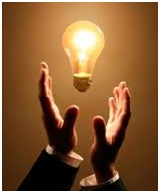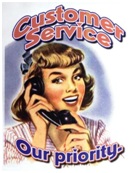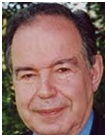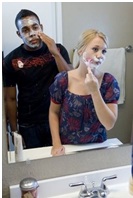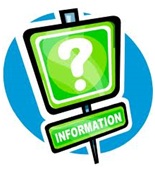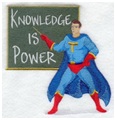|
 |
|
 |
|
|
||
Creativity
Creativity is... Creating new ideas to solve a particular problem. Creativity is closely associated with Edward de Bono’s concept of “lateral thinking” that aims to find entirely new ways of thinking and acting by looking for different solutions to problems.
How to think creatively
1. Define the problem Look at alternative definitions of the problem and what’s important to customers (e.g. safety in airlines). James Dyson (pictured right) invented his bagless vacuum cleaner after identifying these problems:
2. Generate alternative ideas to solve the problem How?
a) brainstorming Small groups (min. 6, max. 12) creating as many ideas as possible in a short time (min. 20 minutes, max. 45). A leader must keep the group focused on the problem and encourage everyone to contribute effectively by allowing no criticism and building on each other’s ideas (called “piggybacking”). It normally works best away from the normal work environment e.g. hotel. b) think about the customer Any new product idea must focus on customer satisfaction and marketing’s 4 P’s:
c) dividing a problem up into different parts Edward de Bono calls this “fractionation” e.g. car transport becomes car and driving. Then think about the issues relating to both - for example:
d) provocation (“po” for short) A term invented by Edward de Bono (pictured right) that describes the encouragement of new ideas from:
a) escaping (from any point that is taken for granted) e.g. schools don’t have children.
b) exaggeration (upwards or downwards but never to zero) e.g. a company has only one employee, and a hospital one patient.
c) comparison - of
d) being deliberately wrong (to see where it gets you).
e) using random words (from a book, dictionary or magazine).
f) wishful thinking (‘wouldn’t it be nice situations’) e.g. people work only three days a week.
g) linking problems to possible consequences e.g. cars create global warming.
h) role reversal e.g. children teach teachers and workers manage managers. One fun reversal is pictured right!
3. Ask six important questions
a) Are there better ways of doing something and why haven’t they been done before?
b) ‘What if’ questions e.g. what if teachers couldn’t speak?
c) Are our assumptions wrong?
d) What do customers want?
e)What is our intuition or gut feeling?
e) What information do we need?
4. Involve people Everyone has the potential to be creative, so involve everybody through:
5. Be a creative person The characteristics of creative people are:
a) purpose Hate complacency and challenge yourself to change the world.
b) passion Love what you do.
c) commitment Hard work and perseverance without fearing failure.
d) curiosity Seek and love new ideas and knowledge.
e) question everything
f) teamwork
g) thought The best ideas often come from relaxation and quiet reflection. If a solution doesn’t come immediately, take a break, let your subconscious work on it and return to the problem.
h) integration Look for links between different subjects so that you can see the whole problem and its causes/remedies (called holistic thinking). For example, health services dealing with the prevention as well as the treatment of illness.
i) knowledge
6. Put the best ideas into action
The problems of each idea must be examined before they can be applied - for example:
Key quotes explained
“Genius is one per cent inspiration and ninety nine per cent perspiration” - Thomas Edison (American inventor of the light bulb, pictured right) The inspirational “Eureka!” (“I’ve got it!”) moment is only a very small part of creativity. The rest is determination, experimentation and hard work, driven by a passion for creative fulfilment. “To stop is to rust”, Edison also said.
“Ask an impertinent question and you are on your way to a pertinent answer”, - Jacob Bronowski (from his book, The Ascent of Man, also a BBC TV series, pictured right) Creative people ask the right questions (however unusual or revolutionary they may be) and then put their thoughts into action, spurred on by the “thrill of creative effort” (as the American president, Franklin D. Roosevelt, defined happiness). The joy of creativity is the process rather than the end result. “The artist finds a greater pleasure in painting than in having completed the picture”, the Greek philosopher, Seneca, said.
“The reasonable man adapts himself to the world; the unreasonable one persists in trying to adapt the world to himself. Therefore, all progress depends on the unreasonable man” - George Bernard Shaw (Irish writer, pictured right) Change the world by doing what you think is right (not what other people think or tell you) and hate conformity (what the American president, John F. Kennedy, called “the jailer of freedom and the enemy of growth”). Seek the best solutions to problems (even if people think you’re mad) and be prepared for unusual discoveries. “If you do not expect the unexpected, you will not find it”, the Greek philosopher, Heraclitus, said.
Best books
Edward de Bono, Serious Creativity (1992) The best of his many books on lateral thinking (the first was published in 1967).
Edward de Bono, Six Thinking Hats (1985) These six thinking hats represent the requirements of creativity:
(For more detail on creativity see Lateral Thinking and Six Thinking Hats in the Business Books section) |
|
|
||
|
|
||
| Copyright © wisdomtowin.com 2025 All Rights Reserved | ||
|


